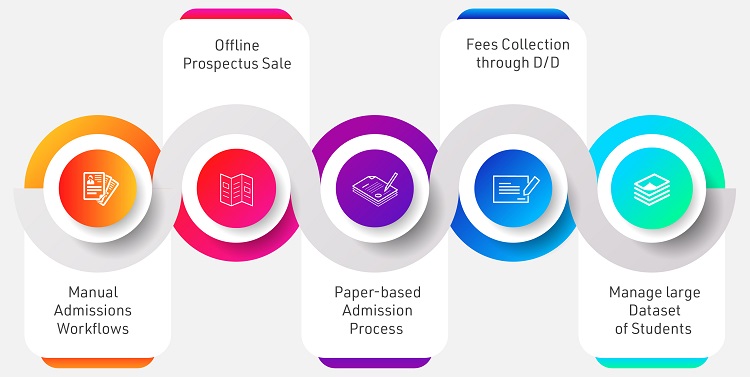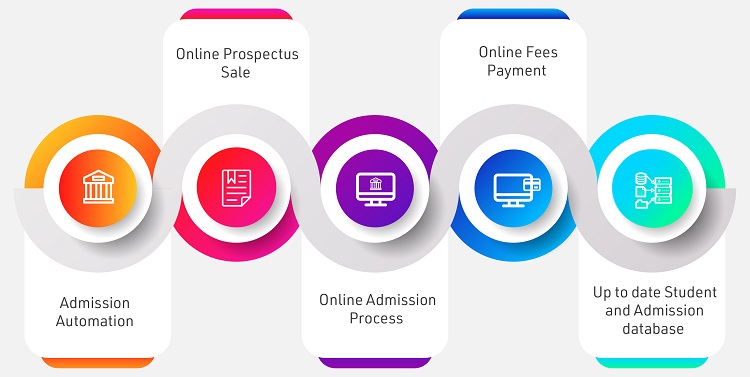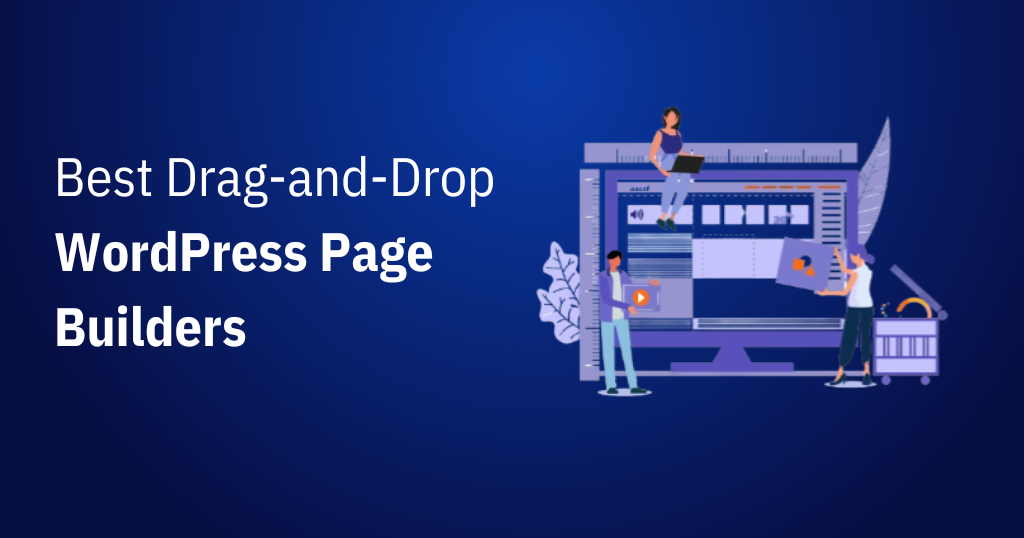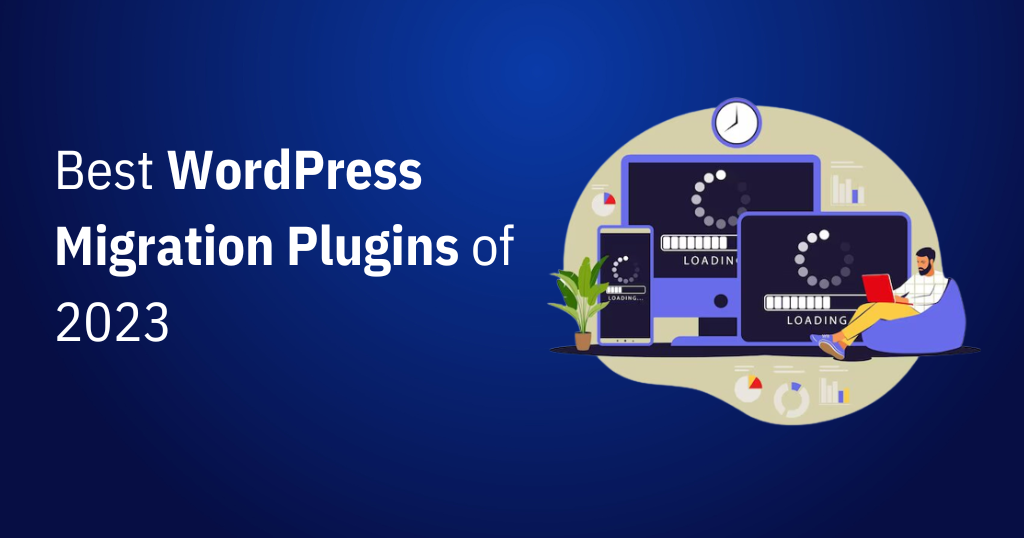The ILS LAW college, which is rated among the Top Ten Law Institutions in India for many years, was facing challenges with the manual paper-based admission processes.
Admission in the ILS LAW was going on through the year for Traditional Programs along with enrichment & value-added courses.
Its admission office was full of hustle & bustle of students, especially during the peak admissions period. The office was filled with long queues of students who wanted to take admissions for various programs & courses offered by ILS LAW.
Before the implementation of the online admission process, the college conducted the admissions manually; which included the student registration process, fees collection, admission verification & confirmation, among others.
Conducting the admission process manually was tedious, frustrating, and prone to errors.
The administration staff was fully occupied with the manual process of admission of the students.
They were doing tedious & repetitive tasks, which took a lot of their time, resulting in less productivity of the team. To complete the entire admission process on time, they had to work very hard.
Challenges with the Manual Admission Process

Manual Admissions Workflows
The manual admission process was time-consuming. Students and their parents had to go to the college to get the information on the entire admission process viz. Registration process, Admissions start & end dates, Fees structure or any other information related to the admissions.
For admissions to various programs and courses, different dates were allotted. On the day of admission, the students had to stand in the queue (for a long time) to get the admission process completed. They filled paper-based forms, attached attested xerox copies of mandatory documents & paid the fees by D/D.
It was difficult for the administration team to handle the manual paper-based admission process for hundreds of students simultaneously. It was a cumbersome process as admission for multiple Programs & Courses was in parallel, especially during the peak admission period.
The admission staff was manually entering the student’s data collected from the admission forms into excel sheets. Another challenge was to manage and maintain those excel sheets.
In short, the manual admission process had the following challenges.
- Lots of Data Entry, Paperwork.
- Discrepancies in the admission process and difficulties in tracking admissions stages.
- The time required to complete the entire life cycle of admissions was weeks.
- The data was in excel sheets; hence it was challenging to generate reports such as year-wise admissions, course-wise admissions, fees collected, NAAC related reports.
It took weeks to complete the entire admission process. It took months to compile the data and generate reports.
Offline Prospectus Sale
The prospectus for various Programs and Courses (including enrichment & value-added courses) were available for sale from college. It also included admission form along with other forms. The student and/or parents had to go to the college to buy the prospectus.
Cash Payments was the only option to buy the prospectus.
There was a manual effort to track the sales of the prospectus, especially for different Programs & Courses. It was even more challenging to generate reports of it.
Paper-based Admission Process
The college used to conduct the admissions process using various paper-based forms. The prospectus contained the admission form along with various other forms that were required to be filled by the students.
During the admission process, the students had to submit mandatory documents (attested Xerox Copies) such as
- 10th, 12th Marksheets & Passing Certificate.
- Birth Certificate.
- Caste Certificate.
- Graduation & Post Graduation Marksheets & Passing Certificate (If applicable)
Students had to wait in the queue to get the documents verified from the admission staff.
If a document of a particular student needs to be retrieved, or if specific information of a particular student was required, it was cumbersome to search it through all the paper forms.
Fees Collection through D/D
Once the document verification process completed, there was another queue for payments of fees through D/D in the main administration building.
Students & Parents had to fill up challan, wait in a long queue for fees payment.
Few students requested the Part-Payments option. They want to pay in installments. Identifying overdue payments of these students was a manual effort.
Generating MIS reports of fee payments (including part payments) of students was a tedious process.
Also, limited transparency in the fee payment process was a serious issue.
As the institution was growing year by year, tracking the fee payments of the students was cumbersome. Various stakeholders demanded an online fee payment facility.
The admissions for extra and co-curricular courses were conducted throughout the year; hence the admission process seemed like never-ending.
Manage large Dataset of Students
A vast amount of student information was accumulated year on year by the college. This students’ data was maintained in various excel sheets. There were multiple versions of these excel sheets.
Also, these excel sheets were shared among various members of the institution through emails.
Security was another major concern. Controlled access to the data in the excel was challenging. Anyone having access to the excel sheet was able to view the sensitive details of the students.
The student’s data was not available in real-time to all the decision-makers.
Solution

WPoets has undertaken a very professional approach of phased implementation called a Continuous Improvement Program for this college.
The first step we did is to identify the pain points of the college. We suggested automation of the admission process right from students filling admission forms to fees payments to admission confirmation.
The decision-makers of the college were convinced that automation of the admission processes could significantly ease the complexities that they were facing.
After multiple discussions with the college, we agreed on various points and things that needed to be worked on priority. We laid out the entire plan of integrating the online admissions replacing the existing manual process.
We worked closely with the college staff members to understand their complex admission process in and out.
There were two main challenges that we solved were,
- Importing past students data
- Handling admissions of existing and new students with complex workflows for various Programs and Courses.
Admission Automation
We built a custom admissions workflow so that the students can easily complete their admission process.
The college had a requirement that the entire enrollment process of first-year students should only be conducted from the college campus. Rest students can complete the process from anywhere.
Instead of the students standing in the queue for a long time to get the admission process completed, they now can comfortably fill their application through computer allotted to them, upload necessary documents, pay the fees online, all under the supervision of the admission team.
The new admission process was seamless and was completed in a few hours. It simplified the entire operations making it more efficient than the manual admission process.
Simultaneous admission for multiple Programs & Courses was possible even during the peak admission period.
Since the admission process was similar for most of the Programs and Courses, repetitive & tedious tasks were drastically reduced hence boosting the productivity of the admin team.
The admin team had to intervene less since the entire process was conducted by students themselves.
Online Prospectus Sale
The prospectus for various Programs and Courses is available for download from the college website itself. The students now purchase the prospectus online. Once the payment is made, they can download the prospectus.
This eliminated the trip of the students and/or parents to college for buying the prospectus.
The admin team from their backend can now monitor the number of downloads and payments against the prospectus sale.
Online prospectus sale allowed them to focus more on other important tasks.
Online Admission Process
The benefits of conducting online admissions for handling the enrolment process were seen on the first day of the implementation.
The admission process now is a completely transparent and well-administered mechanism
Another benefit was, it allowed the college to conduct admissions almost paperless.
The average turn-around time for the entire admission process for various programs and courses reduced from weeks to days.
The best part was the online admissions eliminated the bottlenecks during the peak admission season & reduced the burden on the administration staff. Not only that, but it also removed the student’s queue from the admin office.
Students securely logged in the online admission system (using OTP sent on email), filled up the entire application form, uploaded their photo along with the necessary documents such as mark sheets, category certificates, among others.
The enrolment module did the routing of application of the student based on the selected program, course, caste or category and other influential parameters.
Next, they paid the fees online. Once the payments were received, the administrative team would confirm the admission.
It also detected whether a new student or existing student is taking admission based on the CET number. or PRN entered.
Students’ admission database is available to all the stakeholders through their portal. Now it’s convenient and efficient to retrieve the student’s information as compared to the manual admission process.
Online Fees Payment
Fee collection is the most crucial component of the admission process. We integrated the SBI Payment gateway so that the students & parents can pay the college fees online. This replaced the time-consuming & mundane fees collection process through D/D.
Most importantly, it removed one more queue of fees payments by Students and Parents.
Once the students fill and submit the admission application, they can view the detailed fee structure, including its components and pay for it.
Authorised personnel from the college team through their portal can pre-configure these fee components depending on the student’s program, course, caste, among others.
Late fees & super late fees, fees collection start and end dates can also be configured.
Online fees payments help the administration team to easily track the student’s payments as compared to offline fee payments. They can also track partial payments made by students.
Also, a separate process was custom built for the college’s accounts department to reconcile all the payments against the students. This made sure that there is no gap left in payments processed and the bank received.
MIS Reports are generated, giving a clear picture of admissions & cash flow.
Up to date Student and Admission database
The student’s data is captured through the online admission process itself, thus eliminating the need of the administration team entering the data manually into the excel sheets.
The unnecessary complexity of managing the students’ data in various excel sheets (which were shared among various members of the college through emails) was completely eliminated.
As the students themselves filled their information, the process was less error-prone.
As the students themselves filled their information, the process was less error-prone.
Students taking admission for the first time in the college were added to the central database. Existing students’ information is updated as they progress year by year.
The most important advantage of the online process was all the data is stored on the college’s server instead of a third-party ERP vendor’s server. We manage these servers.
Another advantage is all the data is stored digitally in one central location. This data is completely secured. Only authenticated and authorised users have access to the sensitive details of the students.
The student’s data is available in real-time to all the decision-makers.
The college has seamlessly handled admissions of thousands of students for various programs & courses. This is possible because of the scalable enterprise architecture on which the enrollment module is built.
Results
Applicant Benefits
- Students and/or Parents can buy the prospectus online.
- The applicant was able to fill the form under the supervision of administrative staff so that if any queries or question concerns that arise can be resolved on the spot by respective personnel.
- Students paid the fees online through the Admission flow itself. A Few students opted for Part Payment, which was tracked automatically.
- The applicant didn’t have to wait in long queues as s/he is allotted a specific time in which s/he completes the entire admission process.
College Benefits
- Admission bottlenecks were eliminated, especially those during peak admission period.
- Customized admission process with advanced logic features for various Programs and Courses simplified the college’s operations.
- Lower operating cost, Digitization, and automation of the process, almost paperless processes, resource optimization were few of the advantages.
- More transparency in the admission and fees collection process hence fewer disputes.
- The system was able to handle any numbers of Applications simultaneously
- Less administrative work hours per week required for handling admission processes.
- The college was able to generate NAAC reports for various metrics of key indicators of the QIF such as Student Enrollment and Profile, Student Performance and Learning Outcomes, Student Support & Student Progression, among others.


